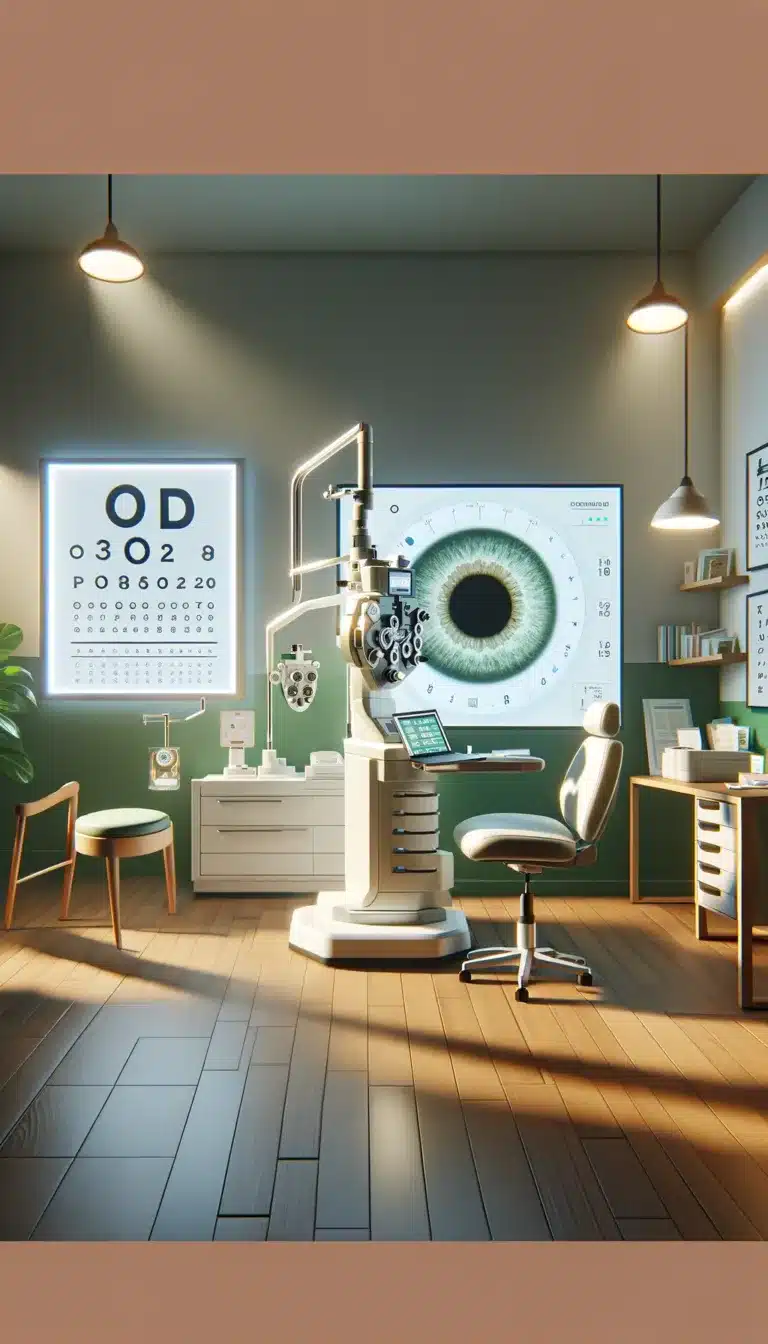Does Zenni Take Insurance? Eyewear Savings and Benefits
Introduction
When it comes to purchasing eyeglasses, the common narrative involves a visit to the optometrist, followed by the daunting task of choosing frames and lenses from a limited, often expensive selection. However, as someone who has navigated the eyewear industry for over a decade, I’ve found a more efficient, cost-effective approach. Enter Zenni Optical – a game-changer in how we buy eyeglasses. The question I often get asked is, “Does Zenni take insurance?” While Zenni’s direct insurance use may not be straightforward, there are savvy ways to maximize your insurance benefits and save significantly.
How to Leverage Insurance with Zenni Optical
Out-of-Pocket Payment
The first step is straightforward. You select your stylish frames and lenses on Zenni’s user-friendly website and pay for them out-of-pocket.
Itemized Receipt Request
Post-purchase, obtaining an itemized receipt is key. Zenni simplifies this by offering a downloadable invoice via your order history, or you can reach out to their customer service for help.
Insurance Claim Submission
Armed with your itemized receipt, you’re set to submit a claim to your insurance for reimbursement. The specifics vary by insurer, especially for out-of-network benefits, but generally involve completing a claim form and attaching Zenni’s receipt.
FSA/HSA Cards Utilization
Zenni embraces the use of Flexible Spending Account (FSA) or Health Savings Account (HSA) cards, recognizing prescription eyewear as eligible expenses. This method utilizes pre-tax dollars, optimizing your eyewear investment.
Case Study
Expanding on the case study of Sarah, a long-time client who was initially skeptical about the concept of online eyewear shopping, we delve deeper into her journey to discover how she managed to reclaim nearly 80% of her out-of-pocket expenses through her insurance reimbursement, and how utilizing her Flexible Spending Account (FSA) further maximized her savings. This exploration not only highlights the steps taken but also underscores the broader implications and potential financial benefits of navigating online eyewear purchases with insurance and FSA considerations in mind.
Background
Sarah, who had always purchased her eyewear from traditional brick-and-mortar stores, found herself intrigued yet hesitant about the rising trend of online eyewear shopping. Her skepticism stemmed from concerns over fitting, quality, and the complexities of integrating insurance and FSA benefits with online purchases.
Initial Steps
The first step in Sarah’s journey was to overcome her skepticism by conducting thorough research on reputable online eyewear retailers. She looked for platforms offering detailed guides on how to choose the correct frame size and style, virtual try-on tools, and comprehensive customer service to assist with any inquiries. This preliminary step was crucial in building her confidence in the online eyewear shopping experience.
Understanding Insurance and FSA Benefits
Sarah’s next challenge was to navigate the complexities of her vision insurance and FSA benefits. She consulted her insurance provider to understand the specifics of her coverage, including which expenses were eligible for reimbursement and the documentation required. Similarly, she reviewed the terms of her FSA, focusing on eligible expenses and the year-end spending deadline, to ensure she maximized her use of pre-tax dollars.
Making the Purchase
Armed with this knowledge, Sarah proceeded to make her eyewear purchase online. She chose a retailer that provided detailed receipts suitable for insurance and FSA submissions and offered a selection of frames that were both fashionable and within her budget. By selecting a retailer that was in-network with her insurance provider, Sarah ensured that she would receive the maximum reimbursement possible.
Reimbursement Process
After making her purchase, Sarah submitted the necessary documentation to her insurance provider for reimbursement. She carefully followed all the guidelines, ensuring her claim was processed smoothly. For the portion of the expenses not covered by insurance, she used her FSA, thus utilizing pre-tax dollars and maximizing her savings.
Outcomes and Reflections
Sarah’s successful navigation of the online eyewear shopping process, coupled with her strategic use of insurance and FSA benefits, resulted in significant savings. She reclaimed nearly 80% of her out-of-pocket expenses through insurance reimbursement and maximized her savings by utilizing her FSA for the remainder. Reflecting on her experience, Sarah acknowledged that her initial skepticism had transformed into advocacy for online eyewear shopping. She became a proponent of educating others on how to effectively combine online shopping with insurance and FSA benefits to maximize savings.
Broader Implications
Sarah’s case study illustrates the potential financial benefits of integrating online shopping with insurance and FSA considerations. It highlights the importance of conducting thorough research, understanding insurance coverage and FSA terms, and choosing in-network online retailers. This approach not only offers a broader selection of eyewear at competitive prices but also provides an opportunity to make the most of available financial resources, underscoring the value of informed online shopping practices.
What’s New in Eye Care
In the rapidly evolving field of eye care, keeping abreast of the latest developments and innovations is crucial for both consumers and healthcare professionals. The landscape of eye care is changing, driven by technological advancements, increased awareness of environmental impacts, and the continuous pursuit of improved patient outcomes. Below, we delve deeper into these recent shifts and innovations that are shaping the future of eye care.
The Critical Role of Regular Eye Examinations
The significance of regular eye examinations cannot be overstated. A pivotal 2022 report by the American Academy of Ophthalmology has thrown a spotlight on this aspect, underlining the fact that early detection of eye diseases through routine check-ups is instrumental in preventing irreversible vision loss. This early intervention approach is particularly vital for conditions such as glaucoma, diabetic retinopathy, and macular degeneration, where the early stages may not present noticeable symptoms to the patient. Regular screenings not only facilitate the early detection and treatment of these conditions but also offer a comprehensive overview of the patient’s overall ocular health, potentially identifying signs of other systemic diseases.
The Surge in Eco-friendly Eyewear
As environmental concerns take center stage globally, the eyewear industry is not left behind. A groundbreaking 2023 survey revealed a significant shift in consumer preferences, with 50% of respondents now favoring sustainable eyewear options. This surge reflects a broader trend towards eco-conscious consumerism, where individuals are actively seeking products that minimize environmental impact. Eyewear manufacturers are responding by exploring sustainable materials, such as recycled plastics, biodegradable frames, and lenses made from renewable resources. This shift not only addresses the environmental footprint of eyewear production but also resonates with a growing segment of consumers committed to sustainable living practices.
Augmented Reality Glasses: A Vision of the Future
Perhaps one of the most exciting developments in eye care technology is the advent of augmented reality (AR) glasses. These innovative devices are at the forefront of transforming the lives of individuals with vision impairments. Early prototypes have demonstrated the potential to significantly enhance daily functionality, offering users the ability to navigate their environments more effectively, recognize faces, and even read text that was previously inaccessible. AR glasses integrate digital information with the physical world, providing a hybrid reality that enriches the visual experience for users. Beyond their application for vision impairments, AR glasses are also being explored for educational, entertainment, and professional uses, marking a significant step forward in wearable technology.
These developments in eye care—ranging from the emphasis on preventive screenings to the embrace of sustainability and the breakthroughs in technology—illustrate a sector that is both dynamic and responsive to the needs of its patients and the planet. As we look towards the future, the continued innovation and research in eye care promise not only to enhance visual health but also to revolutionize the way we see and interact with the world around us.
Leveraging FSA/HSA for Eye Care
An often-overlooked aspect of eye care financing is the strategic use of Flexible Spending Accounts (FSA) and Health Savings Accounts (HSA). These accounts offer a tax-advantaged way to pay for eligible medical expenses, including many related to eye care. Notably, expenditures such as prescription eyeglasses, contact lenses, and even certain over-the-counter items can be covered using FSA or HSA funds. This is particularly beneficial for individuals seeking to manage their eye care expenses more efficiently. As we continue to navigate the complexities of healthcare financing, understanding and utilizing FSA/HSA for eye care expenses can significantly reduce out-of-pocket costs, making comprehensive eye care more accessible to a broader population.
These developments in eye care—ranging from the emphasis on preventive screenings to the embrace of sustainability, the breakthroughs in technology, and the strategic use of FSA/HSA—illustrate a sector that is both dynamic and responsive to the needs of its patients and the planet. As we look towards the future, the continued innovation and research in eye care promise not only to enhance visual health but also to revolutionize the way we see and interact with the world around us.
Top 11 Tips for Zenni Eyeglass Buyers
- Always request an itemized receipt for insurance claims.
- Consider using your FSA/HSA for payment to save more.
- Regularly compare Zenni’s offerings with other providers for the best deals.
- Maintain and clean your glasses properly to extend their lifespan.
- Explore eco-friendly frame options for a sustainable choice.
- Understand the psychological impacts of vision problems and seek support.
- Stay informed on the latest in eyecare technology to enhance your experience.
- Be mindful when selecting eyeglasses for children, prioritizing their eye health.
- If considering contacts, weigh the pros and cons thoroughly.
- Adhere to nutritional advice for eye health to prevent deterioration.
- Be aware of the role genetics play in eye conditions and plan accordingly.
FAQs
- Can you submit Zenni to insurance? Yes, by paying out-of-pocket and submitting an itemized receipt to your insurer for reimbursement.
- How is Zenni so much cheaper? Zenni cuts out the middleman, offering eyewear directly from their manufacturing to consumers.
- Are Zenni glasses FSA eligible? Absolutely, as they qualify as a health expense.
- Does Zenni do payment plans? While direct payment plans aren’t offered, utilizing credit cards or FSA/HSA cards provides flexibility.
Conclusion
Navigating the intersection of eyewear affordability and insurance benefits might seem complex, but it’s manageable with the right knowledge. Zenni Optical represents not just a platform for purchasing eyeglasses but a doorway to utilizing your insurance and savings accounts effectively. As we look towards the future, the evolution of eyewear technology and insurance policies will undoubtedly continue to transform our approach to vision care. Explore your options, stay informed, and most importantly, ensure your eye health is never compromised by financial constraints.
For more insights and guidance on maximizing your eyewear investments, contact us here.


